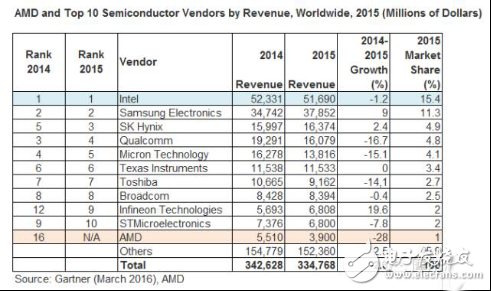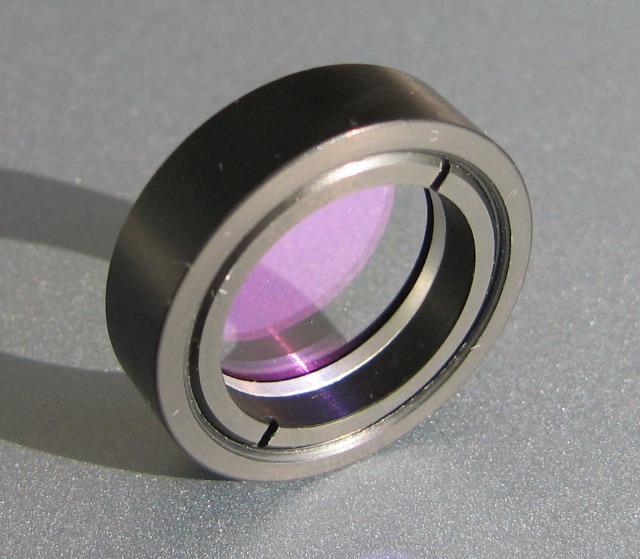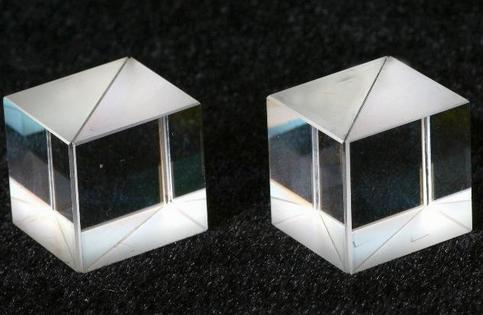How to see AMD license x86 patents to Chinese joint ventures
According to the Wall Street Journal, AMD and Tianjin Haiguang Advanced Technology Investment Co., Ltd. reached an agreement that the two parties will establish a new joint venture in China. According to the agreement reached, AMD authorized the x86 patent to the Chinese joint venture company. This technology has been considered as AMD and Intel's crown jewels. The joint venture will use the technology to develop server chips sold only in China, while AMD expects to receive $293 million in license fees and royalties. After the news came out, AMD's share price soared. On April 22, US Eastern Time, AMD's latest stock price was 3.99, with a rise or fall value of 1.37, or a change of 52.29%. So, can this joint venture China really get the X86 core technology license? 1 AMD days are not good, living space is constantly eroded by intel The survival space in the X86 chip market has been eroded by Intel. As early as many years ago, AMD's market share was once close to Intel. But now, in the x86 chip market, Intel accounts for 87.7%, AMD accounts for 12.1%; Intel accounts for 99.4% of the enterprise data center, and AMD's market share has dropped from the previous three-point world to the current 0.6%. . In terms of graphics card business, AMD is also facing the disadvantage of facing NVIDIA. . . . . . In the case of the river, AMD's stock price is even lower and unbelievable, far from matching AMD's strong technical strength - in 2015, AMD's market capitalization was only $2 billion. At the same time, operating income has gone from bad to worse – in 2015, the annual turnover was $3.99 billion, down 28% year-on-year. It is the increasingly distressed business situation that has made AMD more motivated to seek cooperation with mainland China. According to the information disclosed by foreign media, AMD's cooperation with mainland China is obviously very wise. Up to now, AMD has generated $52 million in revenue, of which $7 million has been included in the first quarter of 2016, and the stock price has soared 52.29%. It can be said that AMD is in a difficult position. Cardiotonic agent. 2 Lenovo was a priority partner because of the cash flow problem and ultimately missed cooperation In addition to finding the dawn, AMD also looked for Lenovo, and Lenovo is still AMD's preferred target - after all, Lenovo's PC shipments are the world's number one, AMD can use Lenovo's machine products, supply chain and market channels to erode Intel Market share of X86 chips. In the end, AMD could not finally come together with Lenovo. Because Lenovo’s operating income is not low, compared with Huawei’s technology companies, its profits have been limited in recent years, and it has acquired huge profits from IBM. The server business, and later acquired Motorola (appears to be only the patent right, not the ownership), if you spend a lot of money to set up a CPU joint venture, it will cause Lenovo's liquidity is very tight, plus very commercial like Lenovo The company, its business transformation will be slow, and ultimately lead to failure to get along with AMD. 3 Whether Chinese capital can win X86 authorization depends on the company's shareholding structure Since AMD and Intel signed a cross-licensing agreement in 2009, the agreement stipulates that X86 authorization cannot be transferred to third-party companies. Whether the joint venture company established by Tianjin Haiguang and AMD can legally own X86 authorization has become the focus of outside attention. In the report of foreign media, “The Intel spokesperson declined to comment; an AMD spokesperson said that the Chinese agreement does not violate the cross-licensing agreement because the ownership structure of the joint venture is different and all information transferred to China is in compliance with US export regulations.†So what is going on here? In fact, as long as you understand the conditions that AMD threw out when seeking cooperation from Dawning and Lenovo, it will be clear. The conditions given by AMD in the past were quite sincere: The conditions given by AMD in the past were quite sincere: First, it took out the source code of AMD's mainstream products in the market in 2013, and allowed the joint venture company to modify it to form an autonomous CPU core, which is equivalent to having an X86 license in disguise. The second is to set up a joint venture IP company to design CPU cores. The joint venture IP company must be controlled by AMD. Because of the agreement between AMD and Intel, if AMD is a minority shareholder of IP, the joint venture IP company will not be able to obtain X86 authorization. Only when AMD remains in control, the joint venture can obtain X86 authorization. . However, although the company is controlled by AMD, the Chinese can obtain the company's management rights. The third is to set up a chip company, which develops CPU based on the CPU core designed by AMD's joint venture IP company. The chip company is controlled by the Chinese party, and even the Chinese party can fully grasp all the shares. Because only in this way, the CPU developed by the company can meet the requirements of the nuclear high base, and then it can obtain the support of the government and then enter the party and government market. It is true that the years have passed, and the time has passed. The specific conditions for the cooperation between China and AMD are not known to the author. However, according to the conditions of the year, Tianjin Haiguang is probably the chip company to be established mentioned above. The joint venture between Tianjin Haiguang and AMD is likely to be the IP company mentioned earlier. If true, the joint venture between Tianjin Haiguang and AMD can indeed modify AMD's CPU core and enjoy the X86 license in disguise. Haiguang can develop the server CPU by purchasing the CPU core developed by the joint venture company. Of course, it can only be limited to the Chinese market. Whether the 4CPU core is safe and controllable depends on understanding the IP core In fact, AMD's practice of selling CPU cores is exactly the same as ARM's authorization of IP cores for ARM camp IC design companies such as HiSilicon and Spreadtrum. As for whether it is safe and controllable, for example, the CPU core sold by AMD and ARM is a rough house, Tianjin Haiguang, and domestic IC design companies such as HiSilicon, Spreadtrum, Quanzhi, Ruixinwei and Xinanxian. Since at this stage there is no technical strength to build a rough house by virtue of its own strength, the work is to decorate and sell the rough house. Since the workload is limited to soft loading, it is impossible to find out whether there is a back door in the rough room. It is impossible to determine whether a bug is installed in the wall interlayer. What can be given by AMD and ARM, what the domestic IC design company uses, so that Security risks cannot be eradicated and security cannot be guaranteed.
Coupletech Co., Ltd. is professional manufacturer of Polarization Optics: PBS, NPBS and all kinds of polarizer and waveplate. Our Polarizing Optic products consist of Beam-splitting cuble, Polarizing Beam Splitter Cubes ( PBS ), Non-Polarizing Beamsplitter Cube ( NPBS ), Low order waveplate, Zero order waveplate, Dual wavelength waveplate, achromatic waveplate, Rochon Polarizer, Wollaston Polarizer, Glan Thompson Polarizer, Glan Laser Polarizer, Glan Taylor Polarizer, depolarizer, Brewster window, quartz, Polarization Rotator, optical isolator, and so on. Besides, we also supply optical coating, e.g. AR coating, HR coating, coating and wide range coating.
Coupletech is a long-term partner you can count on, especially polarizing optic. We focus on high quality, quick response, improving Ceaselessly, customer satisfying.
Polarizing Optic Polarizing Optic,Polarization Rotator,Polarizing Filter,Circular Polarizer Filter Coupletech Co., Ltd. , https://www.coupletech.com


